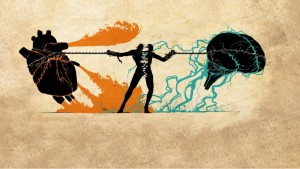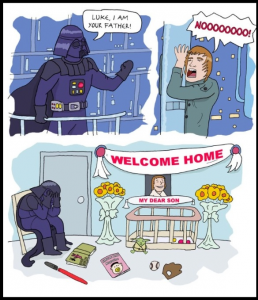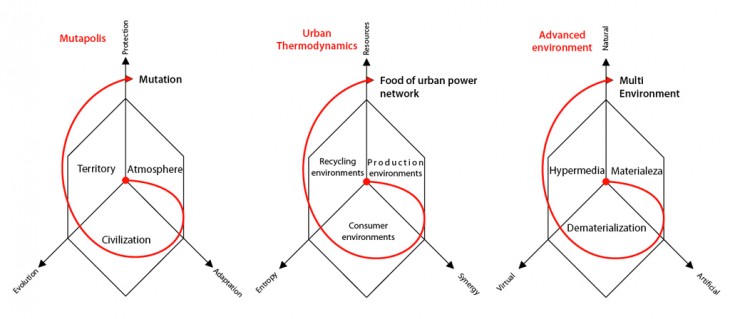To understand the city, we must first integrate 3 key concepts to explain their abilities; Mutapolis, urban thermodynamics and advanced environments, which show us the potentialities, form and infrastructure that have our civilization in order to achieve an intelligent city, from the social fields, economic and environmental, all these elements must always be connected to achieve a healthy balance within our environments. Read More
Advanced Nature in a Sustainable Environment
Life shouldn’t be printed on dollar bills
The goal of economic wealth is to meet human needs in such a way that life becomes in some respect richer and better in the process. It is not simply to produce as many stuff as you want. Stuff is a means. Yet the present aspect of the people on economy has always been focusing on means.
We tend to define the health of a community, a city, or a country according to how much economic capital (like cash flow and property value) and how much cultural capital (like birth of museums or festivals it holds) it has. But by taking only economic and cultural capital into account, we are missing a huge part of the whole thing here. We all know things can run smoothly, and sometimes very effectively accelerated with only individual to individual, a household to a household, a neighborhood to another neighborhood, but what about the connections? Networks and mutual support systems among the residents of a community. Architecture couldn’t even live a day without these connections. It would be dead, deserted, and malfunctioned. Even a self-sufficient building couldn’t survive. This has happened to countless of Summer camp. We architectural students try to put our know-how into the hand of children in rural area. There has never been good connections between people from the city and those kids. The only connection would be a good will. Without studying of how lives there go on each day, studying of history, studying of surroundings materials or geological balance, mimicking ourselves as them, we could never make a connection. So no, without the linkage between whatever the city, the country or the people is offering to the architecture, a part of the building will always be counted as social capital loss.
Placing a building in a certain plot in a city should be as complex as transplanting an organ or replacing a skin in a body of a human. The organ should cohere, and the body should accept, and so is the urban context of any city. Each city has its socio-economical standards factors that should be taken into consideration but as well has its architectural culture and its social particularity.
Title Goes Here

Redefining Prosperity: Tell us what makes us happy. People are sheep. Some architects believe it is their responsibility to play god, and developers/corporate entities are hustlers. Society seems to have an attachment to the word “sustainability,” but considering all of the initiatives we propose, there is still a lot of waste, disfunction, and decline. Buildings don’t actually function the way they are supposed to, and prototypes are produced and reproduced, all while their architects are discouraged from using recycled materials. When its all done photos go in a digital portfolio and models go in the trash. In a consumer culture, we equate good and expensive, in an architects world selling an idea to a client is, at the end of the day, what pays the bills, so what seems to be “sustainable” needs to look good, even if it doesn’t work. How can we be sustainable if the environment within which we learn and work doesn’t follow that model?
Unless institutions can become incubators for creativity as well as encourage students to think about the impacts of their choices, there can be no catalyst for behavior change. As a non architect I see an interesting shift from the ideas that architecture encompasses and reality. During my undergraduate and graduate programs, architects spent a lot of money on prototypes that were never used beyond studio presentations. My question is: what should we do to address this issue? Should architects create more prototypes, while asked to debate the possibility of sustainability without someone gaining financially? I think the problem goes much deeper than the developer and the architect.
That said, there are people, places, and world wide events that want to create a way to better manage our future by creating a culture of civic responsibility, self reliance. The future is going to be a place where resources are limited. Does the answer to our problems lie within buildings? No. One possible answer may be that we, as a society, needs to pay closer attention to the materials used, and improve the approach to design in order to lessen our impact and align our needs as a society with the needs of our world. But unless we start collecting rain water to take showers and get “off the grid,” someone will profit and nothing will change.
Buildings are an integral part of civic infrastructure, I don’t believe they can be taken out of their current context. Technology has come so far in the past 100 years, but we continue to make the same mistakes when it comes to the design of buildings, cities, transportation, and ultimately understanding the expectations and incentives of people.
But then again, people and their environments have always been misunderstood. 
Architecture & Happiness
As architects it is important to understant that architecture is made by people, for people. Regardless a lot of paralell interests, at the end, the most important thing is the sensations and the feelings that these architectures can produce in the users. Its all about the atmospheres that architecture produces in our lifes, and this atmospheres dont have borders. Its important analyze human surroundings and how human needs and desires can reflect in the architecture. In this analysys we cant think in a buiding as a single element, but as a component in a net of interactions in a city.



